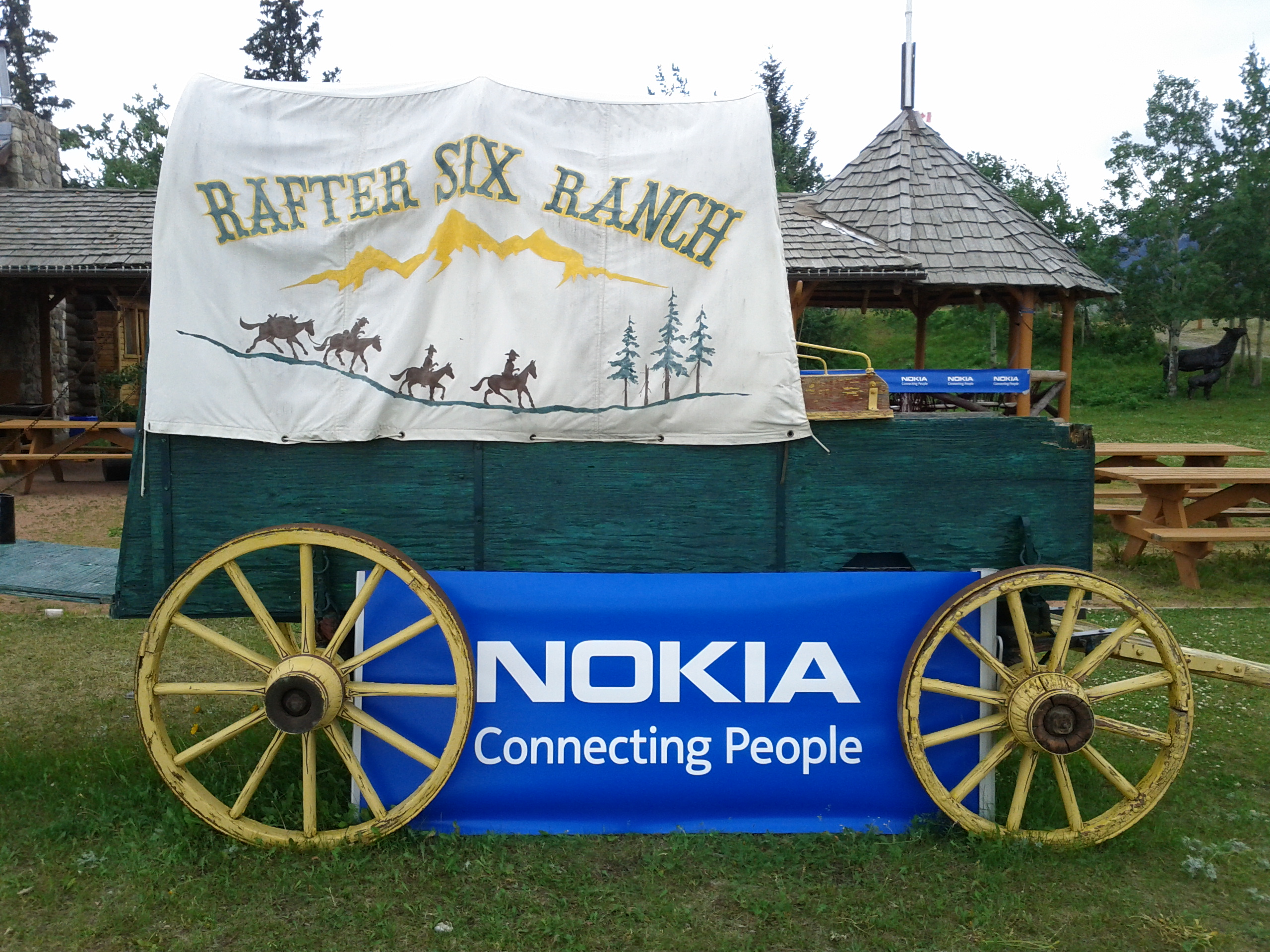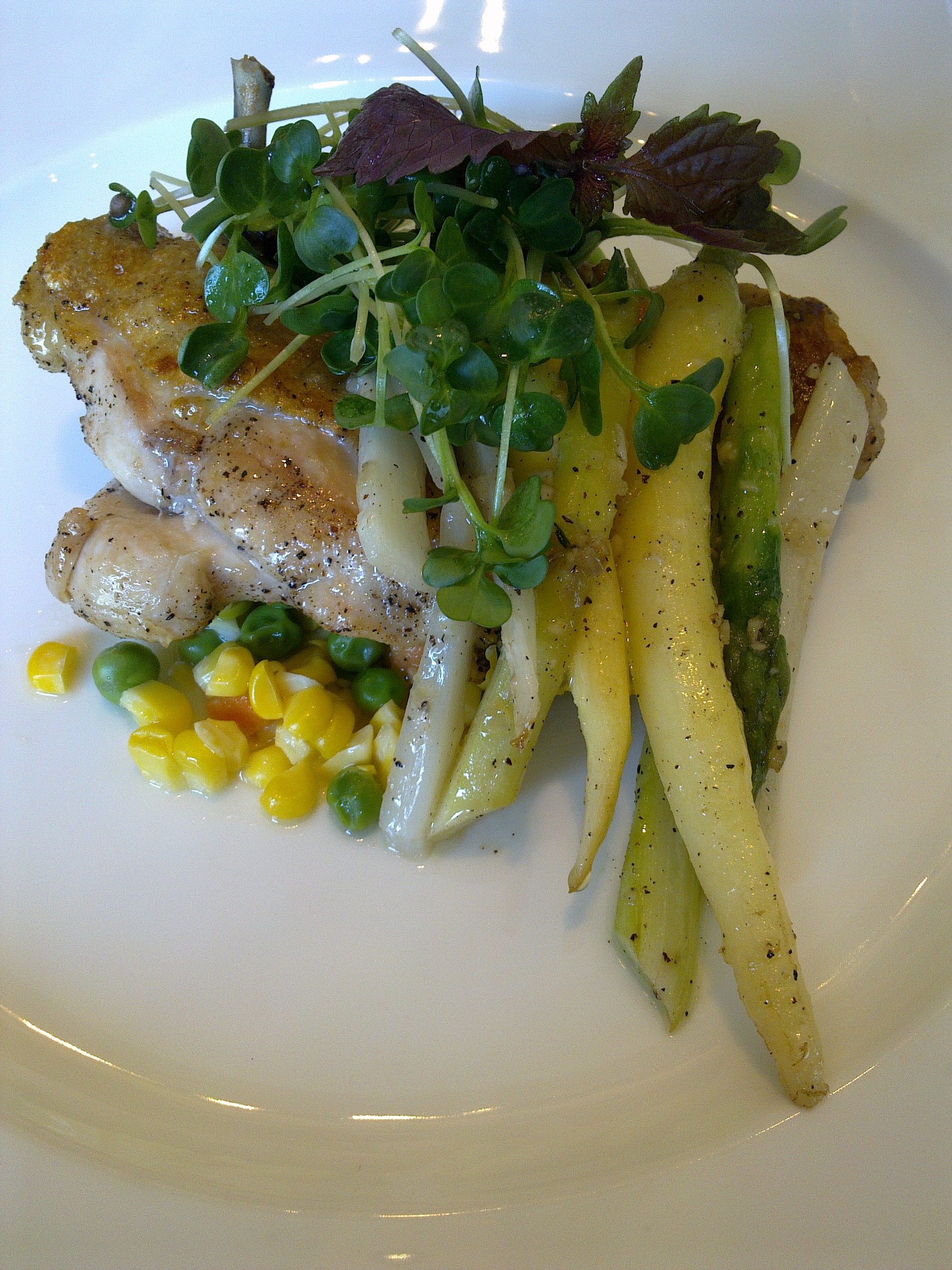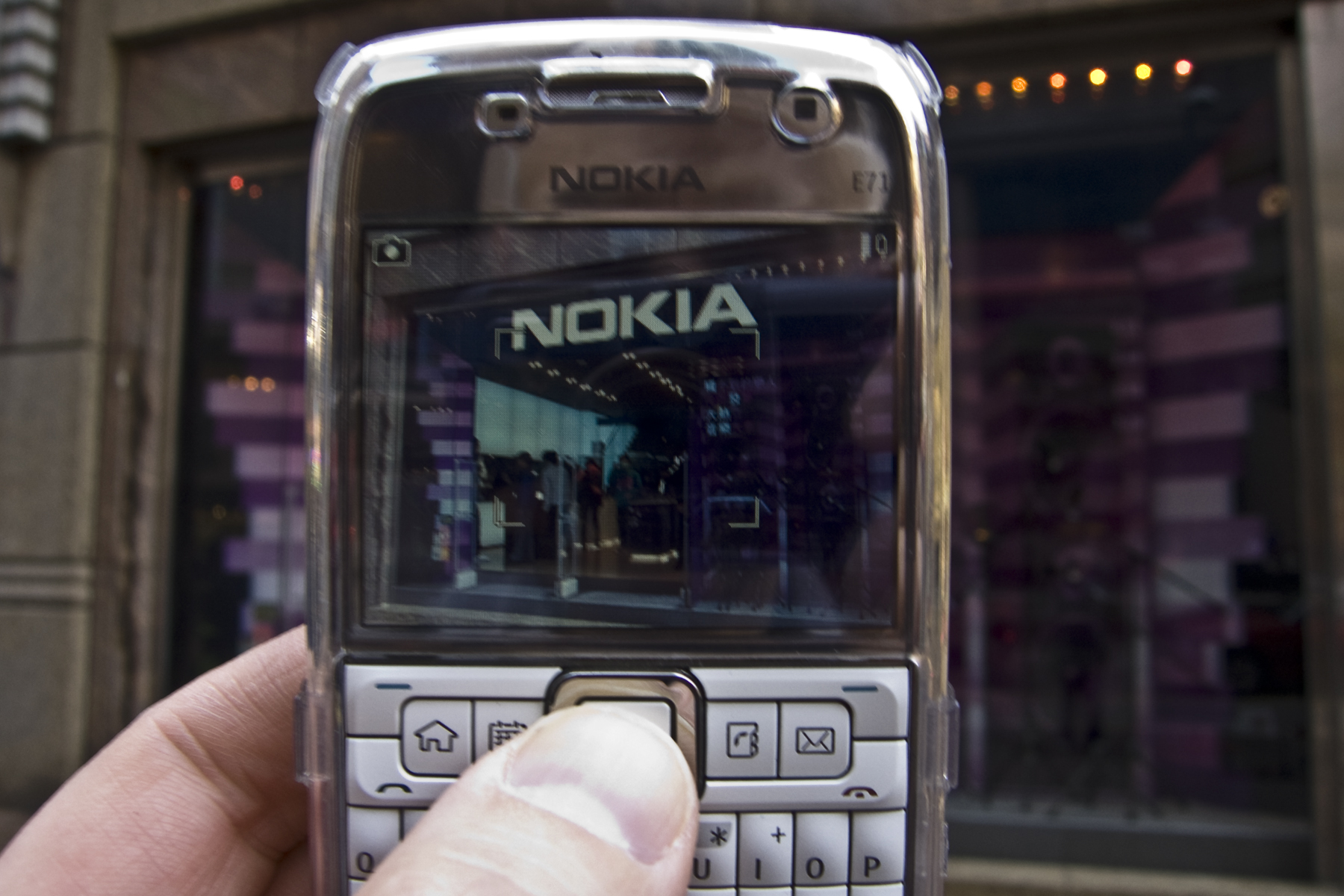If I was second-guessing my switch to Android I had no such regrets about my new carrier, Mobilicity. Yes, there was the small issue of having no signal at home, but the cheap and unlimited service that worked great everywhere else more than made up for that. And their selection of handsets couldn’t be beat — they were the only carrier in English-speaking Canada to sell the Nexus One, and the only one in North America to offer the MotoSpice. Then they trumped both, releasing a device that was both new and familiar at the same time, right when I needed it most. At a hundred and fifty bucks the Nokia E73 was a no-brainer for me.
It was all very comforting, at first. I still had the installer files for my favourite Symbian apps, plus licenses for the paid ones. I spent an evening getting everything on the phone organized into folders and shortcuts, as I had done with Nokias of days gone by. I even gained a modicum of respect for the infamous Nokia Messaging. It seemed to work a bit better on my E73 than on my N86 — the secret was to respect the low memory on the handset by loading only the last few emails from each of my two accounts of the day. Not optimal by any means, but functional at least.
I took my E73 with me to a WOM World event held on a ranch in Western Canada that summer. The journey there and back reminded me of just how dated Nokia’s PDA phone OS was. With Symbian the handset was offline by default; specific steps were required by the user to take it online. Android devices were very different; they assumed a persistent connection to not just the network, but to the Internet as well. With unlimited data available in major Canadian cities, guess which one was more useful?
It had become all too clear that there would be no future for Nokia and I. Their new CEO — Stephen Elop, a Canadian of all things (!) — had announced earlier in the year that future high-end devices would run Windows. I had stopped using Windows long ago; for me it was Linux or nothing. Nokia did have Maemo, a Linux-based tablet OS that eventually made its way onto phones. I had trialled the Maemo-powered N900 the previous spring and quite liked it. But its successor, the MeeGo-powered N9, was never widely available and pretty much doomed from the get-go.
I brought both my E73 and N86 along with me on a Kenyan safari that autumn, where granular control over network charges and a local SIM card served me well. When I got home I retired both and moved on to Android full time.
]]>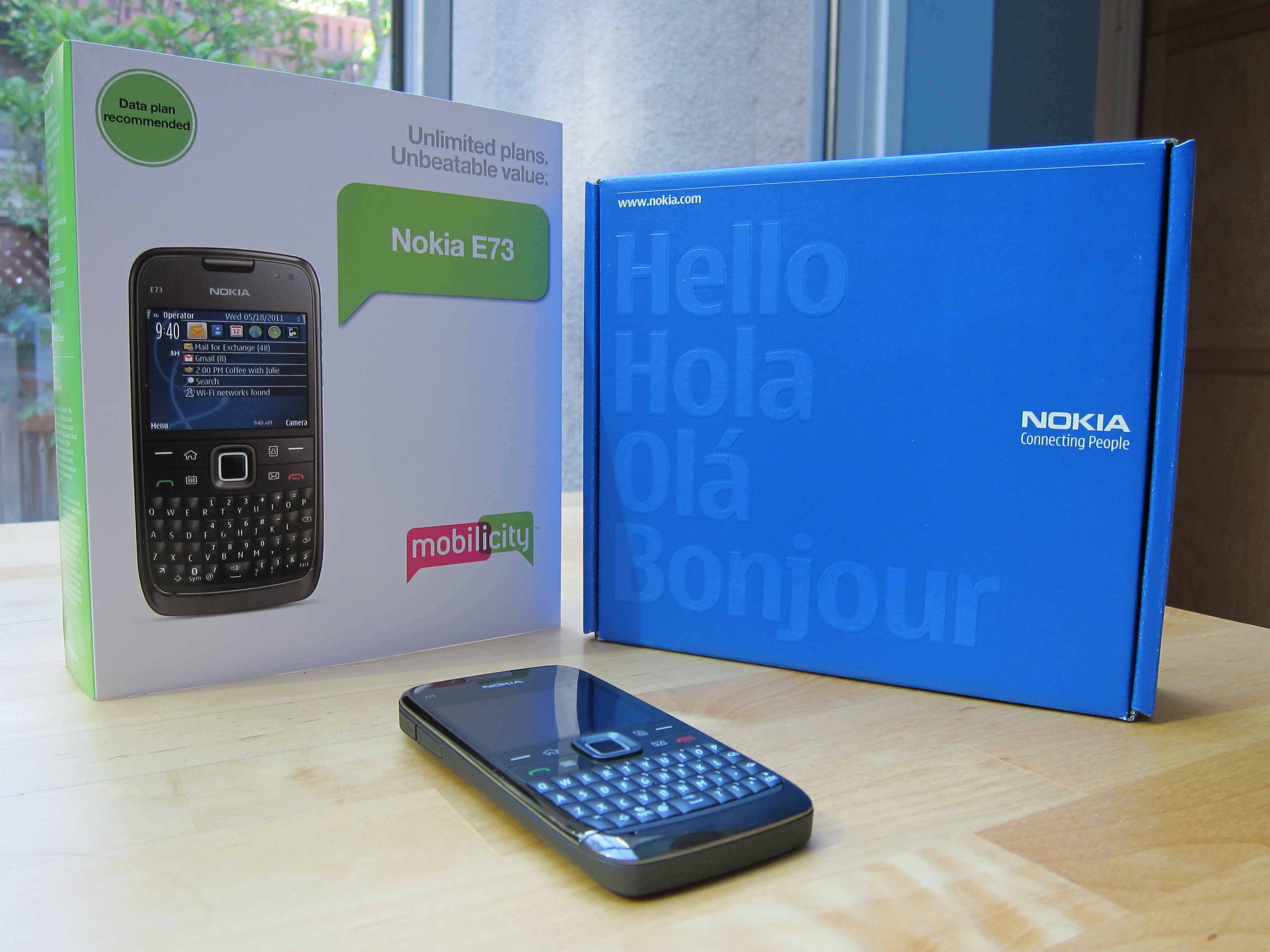
I paid about five hundred bucks for my E71 back in 2008, so imagine my surprise three years later when Mobilicity brought the AWS-tuned E73 to Canada for a measly hundred and fifty. I ran out and bought one almost immediately.
That summer my E73 came along with me to Canmore, Alberta for yet another WOM World event — #NokiaUnfenced. It was to be my last one apparently, as I honestly (perhaps foolishly) professed on camera that I had zero interest in Windows-powered Nokia devices.
I also made an ass of myself on an obstacle course, but that’s another story…
A Summerlicious treat…
Though S60 was a significant downgrade from Android, my modern-ish E73 had many of Symbian’s best qualities from days gone by. The autofocus camera with macro was missing on many newer Nokias of the day, replaced by cheaper and quite inferior EDoF technology. You can read more about that in part one of my Symbian Anna Extravaganza.
And as you can probably guess, Android would win me back in short order. But it would take the brave new world of custom ROMs to do it.
]]>By October of 2008 I had trialled a variety of smartphones from Nokia’s WOM World. The N82, N95 (8 GB version) and E90 had all come and gone. All of them were fine devices, but not a one threatened an early retirement for my E61i. The E71 was a different story, being the official update from Nokia and all. It was smaller, yet had the same screen resolution and a better qwerty keypad. The camera had autofocus and a flash, and best of all there was a version with 3G data service tuned for the Americas. The lanyard loop sealed the deal.
3G data became a lot more useful when Fido, my carrier, started selling Apple’s iPhone 3G — and offered a 6 GB/month data package for $30 CAD. It was still a rip-off, to be sure, but at least it was better than the 3 megabytes I was getting for $25 just two years prior. It was around this time that I started using an app called Qik to stream video from my E71. The results weren’t stellar, but it bears repeating: in 2008 I was streaming live video to the Internet from my mobile phone.
Another S60 innovation was an app called JoikuSpot, which enabled my E71 to broadcast access to my cellular data via WiFi . Such things are taken for granted today, but in 2008 the idea of tethering your phone to a laptop instead of using an expensive hotel Internet connection was the stuff of magic. Only problem was that JoikuSpot, even the paid premium version, was a bit finicky about providing a stable connection. But the idea was bang-on, even if the execution was sometimes lacking.
My E71’s star turn was a week in Hong Kong to ring in 2009. I booked that trip in August of 2008; students of economic history will recall how the global economy kind of went to shit the following month. Despite the doom and gloom I resolved to enjoy myself, and my biggest indulgence by far for that trip was the data roaming fees. I made a pilgrimage to the local Nokia Flagship Store, where I tried the new flagship N96 for the very first time. I would end up trialling that device from WOM World the following month, but it wouldn’t woo me away from my E71.
Truth be told, my most vivid memory of this vacation had nothing to do with the phone. Someone at my hotel had pegged me as some kind of patsy, and sent no less than five, shall we say, “working girls” to my room over the course of an afternoon. Serves me right for blogging instead of taking in the sights, I guess.
My E71 came along on another, more fateful trip in the summer of 2009, one that would put it out of the spotlight and pretty much change my life forever…
]]>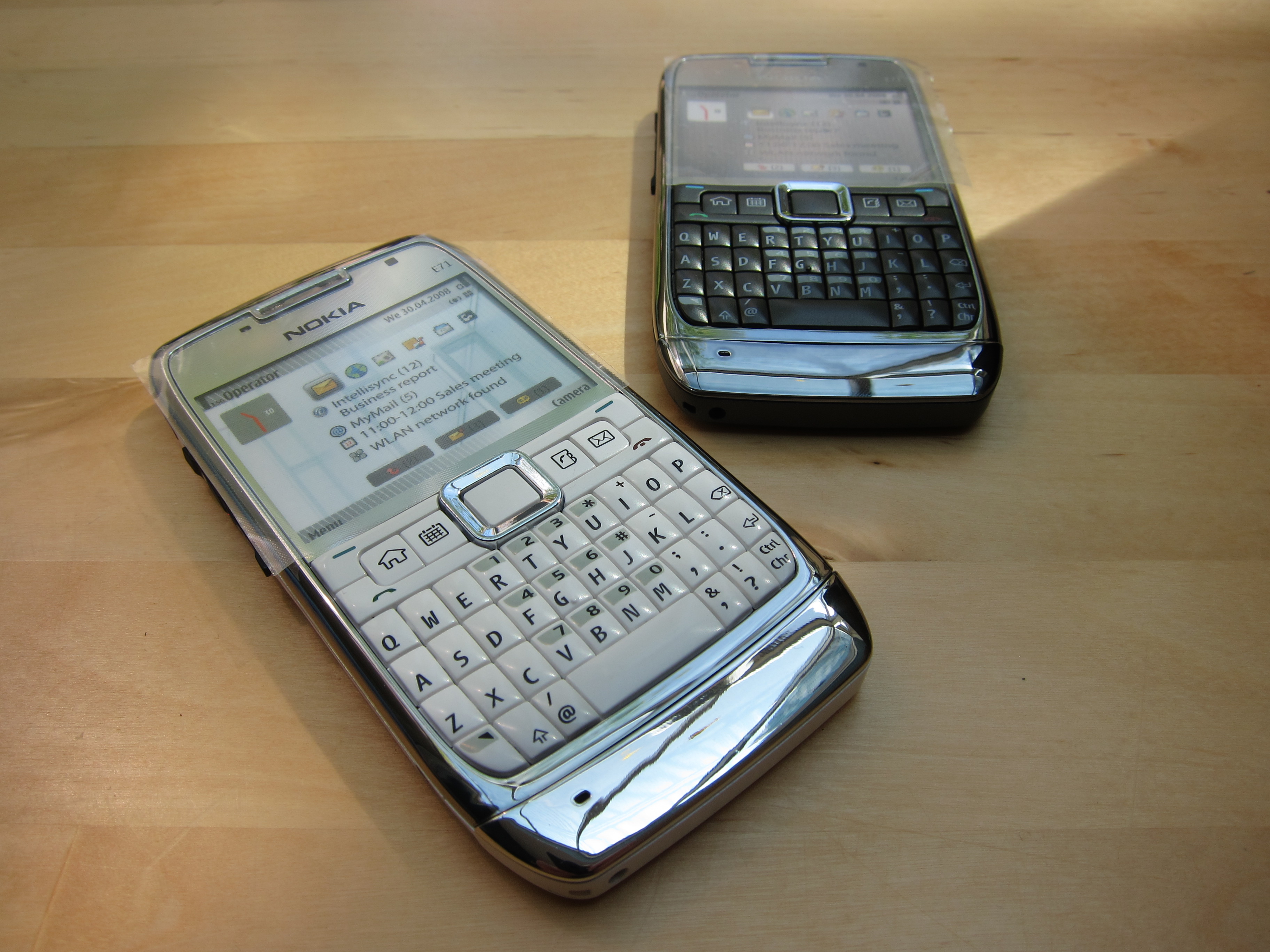
By early 2008 my penchant for collecting dummy phones — like the pair of Nokia E71s you see above — had reached its “irrational exuberance” phase. A photo of my white E71 can be seen here.
The E71 was a logical upgrade from my E61i. That I got to trial it before buying one was an added bonus. Thanks, WOM World!
Here’s my E71 outside the Nokia Flagship Store in Hong Kong, circa January, 2009. More photos from that trip are available on Flickr.
I took a lot of photos with my E71, but this one is far and away my favourite. Nobody believed me when I told them it was taken with a camera phone. My first impressions of the E71’s camera are also available on my old blog.
Video output was limited to QVGA at a paltry 15 frames per second, but thanks to an iPhone data plan from Rogers and an app called Qik I was able to stream live video to the Internet (!) The clip above is my very first, from December of 2008.
]]>Nokia smartphones of the day were powered by the Symbian operating system. The combination of the two was, for me, a culmination of every device I had owned prior. Like other Eseries devices the E61i was made for enterprise, with email support and a qwerty keypad worthy of a BlackBerry. But it also had a camera, and a not bad one at that. Like my Ericssons and Sony Ericssons the E61i supported Bluetooth and SyncML. Around this time I discovered a hosted SyncML service, so instead of shuttling my personal data back and forth to a single computer I could sync over the Internet and access it on the web, as I did with my hiptop — better, in fact, because now I could export my data at any time to standard file formats. Finally, like my TyTN the E61i had both 3G and WiFi radios — though 3G only worked in Europe and Asia. Did I mention that this device was never meant to be sold in the Americas, and was only available to Canada through an online retailer? The lack of Canada-tuned 3G turned out to be a blessing, as I was paying my carrier far too much money for not enough data. If $25/month for a paltry 3 MB seems ludicrous believe me, it was.
Because Symbian — also confusingly referred to as “S60” — was so popular in Europe, I was able to sample mobile apps for the first time. There wasn’t yet an on-device app store; you would instead visit the developer’s website and purchase the app directly from them — imagine that! The available third-party software was generally excellent. There were task managers, giving the user control over the running processes on their phone. There was the free Opera Mini web browser, critical to browsing web pages on my ridiculous data plan. There was even software that could emulate old game consoles, like Nintendo’s Gameboy Color and NES. To play my favourite childhood arcade games on my phone was, well… it was just awesome.
My E61i travelled with me far and wide. Its first test was a trip to New Zealand, where I was able to peruse the morning news over breakfast via the WiFi in my hotel. Next up was a journey to the Great Pyramids of Egypt, where I used GPS for the first time with a Bluetooth accessory. To save on roaming charges I was able to store map data directly on my phone before I left. Accessing GPS satellites was free, and as I later found out, quite illegal in Egypt when I was there. Nonetheless, I’ve a particularly fond memory of being on an overnight train to Luxor, my eyes glued to the E61i’s screen as the train pushed forth into parts unknown.
Perhaps the biggest testament to the E61i’s world-phone abilities was that it actually worked in Japan. It might not have been as svelte as the keitai there, nor could it access Japan’s i-mode services. But as a camera phone and Internet-connected device it could hold its own. You’ll remember that early on I wrote about wanting only two things from a smartphone. In 2000 my VisorPhone had granted me my first wish, an address book that could be synchronized from computer to mobile device. Now I had a handset that I could use anywhere on the planet. Checklist complete.
And then the iPhone came along and changed everything…
]]>
Here’s my S60-powered Nokia E61i, resplendent in its cheap and cheerful crystal case.
As you can see from this photo opp in front of a Fido van (for some long-since forgotten campaign) I was pretty happy with this Eseries device. In many ways it was a culmination of every smartphone I had owned prior. It was sturdy, like any other Nokia. It had a qwerty keypad worthy of a BlackBerry or hiptop. And like my TyTN it supported 3G and WiFi.
The 3G only worked in Europe and Asia, though — good thing, because Fido’s data service at the time was laughable. $10 CAD/month sounds entirely reasonable, but in 2007 it was good for a mere 12 MB of data. If that sounds bad, I was previously paying $25/month for 3 MB!
It works in Japan! Here’s a photo of the famous Shibuya Crossing, taken with the E61i’s 2 megapixel camera — not bad for a night shot with a 2007-vintage camera phone.
The E61i proved its mettle as a travel companion almost immediately on a trip to New Zealand. In addition to Tokyo it also accompanied me to such faraway places as Buenos Aires and Egypt. For the longest time I couldn’t figure out why my blog posts about the latter were getting so many hits — until I finally learned that the Bluetooth GPS accessory I had brought to Cairo with me was, in fact, illegal. Oops.
]]>